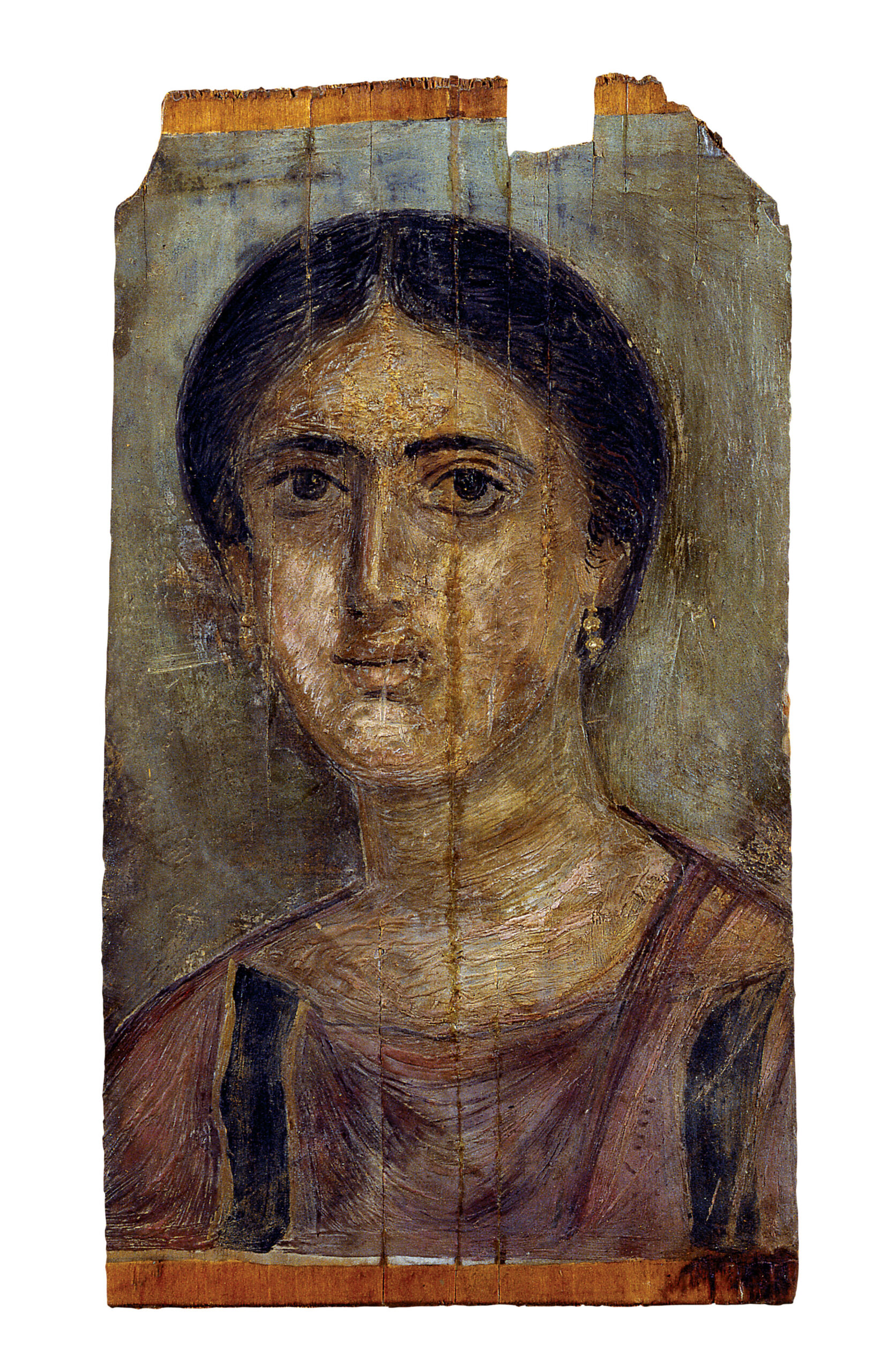

Fayoum type portrait
Preserving the image of a living person after death was an ancient Egyptian tradition, which was materialized through the embalmment of the body and the decoration of the burial sarcophagus. When Egypt fell to the Ptolemies and later to the Romans, the ensuing cultural mix affected the way in which the deceased were depicted.
The so-called Fayoum portraits are paintings in Graeco-Roman style, which were used in Roman-time burials. They were painted on wooden panels and placed on the embalmed body at the position of the the head. They are so-called because most of them have been found in the Fayoum Oasis, south of Cairo. They are known for the realistic representation of facial features, the bright colours and the detailed rendering of decorative elements (garments, ornaments, hairstyle). Because of the lively expressions of the faces, some researchers believe that they were painted while the subjects were still alive.
The production of Fayoum-style portraits ceased at the end of the 4th c. BC, perhaps because of the efforts by Emperor Theodosius I to limit pagan religions and traditions. The Fayoum portraits offer a bridge between ancient painting and the religious iconography that will dominate art in the next centuries.
PUBLICATION
Brouskari E. 2006. Cat. no. 165, in Choremi-Spetsieri Α. – Zarkadas Α. (eds), The Paul and Alexandra Canellopoulos Museum. AncientArt, Athens, 256-257.
